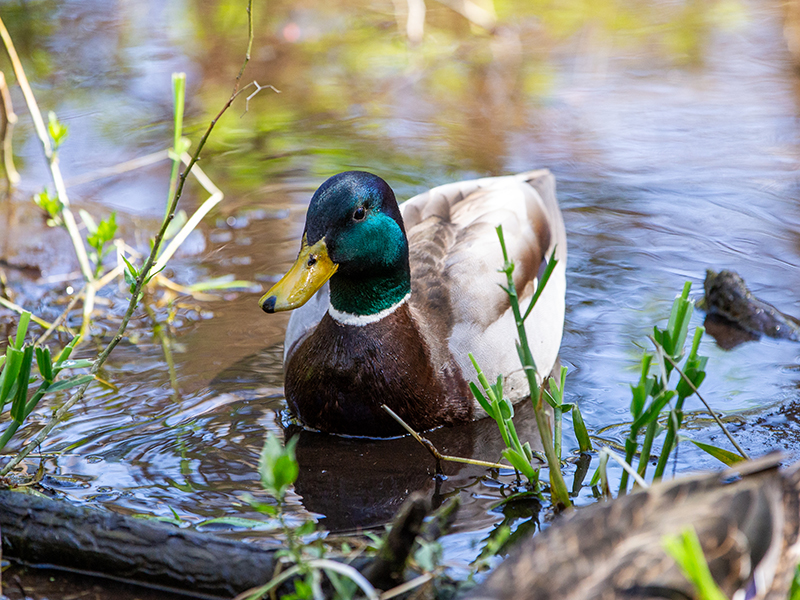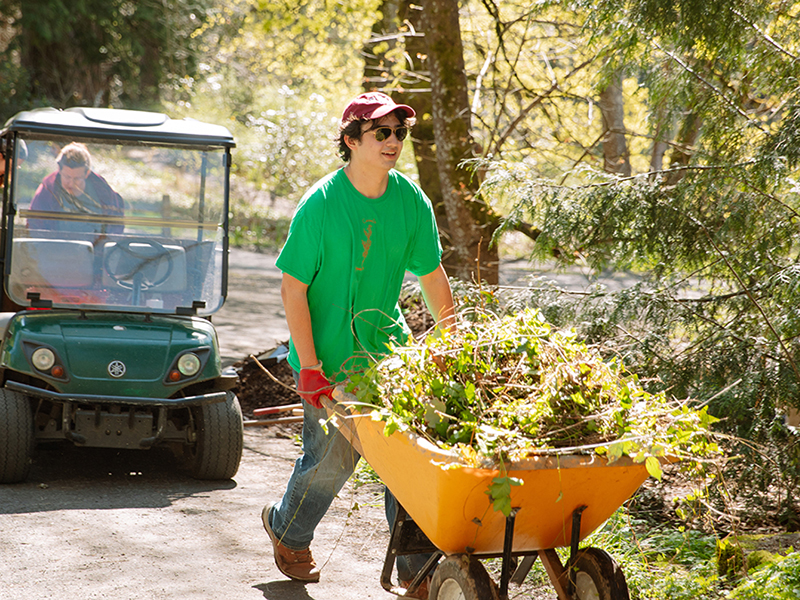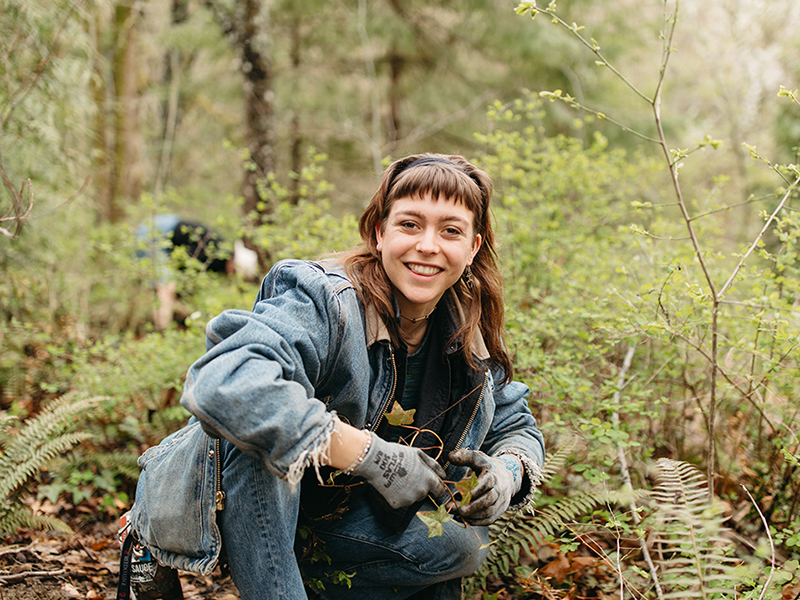Discover Reed Canyon
Whether you’re looking for a living laboratory that sparks your curiosity or a peaceful haven to reconnect with nature, Reed canyon is the perfect place to explore.
About
Reed canyon is a 28-acre watershed in the heart of the campus, running east to west, dividing north from south, and is spanned by two pedestrian bridges and a land bridge. Home to a growing population of wildlife and native plants, the watershed includes the headwaters of Crystal Springs Creek, a tributary of the Johnson Creek Watershed, and Reed Lake, which has been deemed the oldest naturally occurring lake in Portland.
Declared a wildlife refuge by the state of Oregon in 1913, this headwater forest was left largely untouched and untamed until restoration efforts began in earnest in 1999. Restoration goals have included improving diversity of wildlife, managing invasive plant species, restoring native plant communities, and increasing potential habitat for salmon and other resident fish.
Visit
Reed canyon is privately owned and maintained by Reed College. We ask that all visitors follow these guidelines:
- Leave no trace
- Stay on established trails
- Observe wildlife from a distance and never feed the animals
- Leash your dog(s)
- Alcohol and fires prohibited
Reed College staff dedicated to the restoration and preservation of Reed canyon are not able to accommodate group visits or conduct tours at this time.
Those visiting the Reed canyon do so at their own risk. Reed College will not accept liability for any accidents, damage, or loss incurred while visiting the canyon. We ask that visitors respect the habitat.


